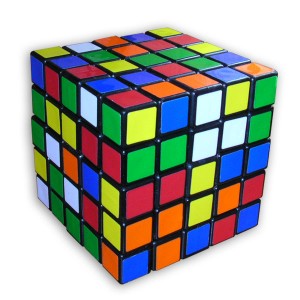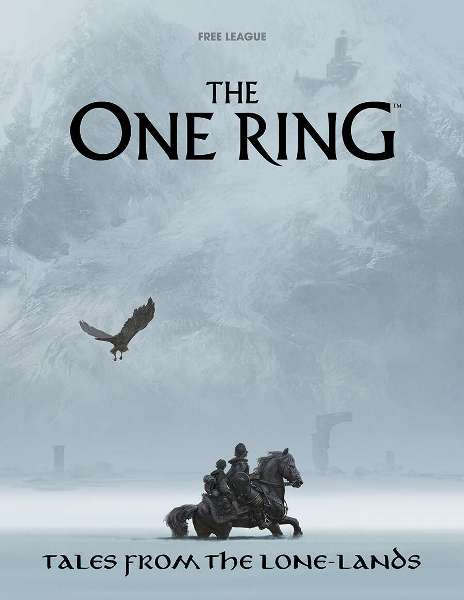The Perfect Fight (Part 2: Feeling the Rush)
By The Warden

PREVIOUSLY: Last week launched the first part of our 5-part series on RPG combat design with an overall and an initiative roll between challenge, duration, damage, and survivability. Challenge won the roll and will start this fight with a bang.
The idea of building a roleplaying game with the right balance of challenge and enjoyment is a basic necessity, a no-brainer of game design. Though while I think about it as a no-brainer, there does appear to be quite a few games out there where enjoyment takes a back seat to challenge or both of them were left in the driveway. (I’m looking at you, Monopoly.) Personal opinion aside, challenge and enjoyment are personal interpretations and this places a significant role in the construction of combat mechanics in any RPG.
One person’s miniature-heavy scrum is another player’s nightmare. Demonstrating this point is the nuclear split between D&D fans with the 4th edition of the game – a miniature-dependent mass battle system redefined to suit individual characters in a small fantasy party. (Side note. When you stop and think about it, it’s perhaps more appropriate to the original design of D&D than many other editions as D&D was inspired by Chainmail, a massive battle game. But that’s not relevant right now.) Those who love that edition (and I was one of them before growing weary of D&D in general) and those who spit on it. Is either side wrong? Nope, because both sides have the same point. Every game speaks to a particular branch of a larger audience.
So let’s get down to business, shall we? Challenge in fight scenes. It’s one of those categories expressed as “Where doesn’t challenge play a part in our system?” It’s huge and reveals itself in numerous ways, from the challenge of the specific individual opponents to the balance of success versus failure in dice rolls. Whether your game is complex or simplistic, it has to allow the pieces to connect and form a whole system without forcing the players to slam those pieces with their fists. Your foundation has to cover a wide range of possibilities with little need for house rules and yet allow groups to assemble their own house rules as they see fit and invoke a rush of adrenaline and pleasure from everyone at the table.
A fight’s challenge stems from many interconnected points: target numbers, dice rolls, static or active defence, opponent variety and power versus character variety and power, environmental effects, initiative, and other unique components all play a major factor. No single point can make or break the fight’s challenge as they work together to create a cohesive whole. If your dice rolls cannot keep pace with the target number of your opponents’ defences, everything will feel too difficult. If your enemies are falling like flies because it’s very easy to beat their defence score or their hit points are fleeting, it will feel difficult. Those same mechanics applied to single efforts – such as making a Strength check to open a door – are put to the test in combat – applying your Strength bonus to all melee attack rolls. What works for a single application may not pass mustard in a series of dice rolls and actions.
EVERY PIECE MAKES A WHOLE PUZZLE
That’s the key to building an awesome combat management system: there is no one key. If your defence scores allow for a base success chance of 55% (assuming you need to roll at least a 10 or higher on a d20), you may want to increase the number of hit points an enemy carries into battle. If your game allows for a large variety of actions per character in a round, you may have built unique combat options into your system, such as tripping, flanking, and other significant modifiers to the fight’s outcome that require planning and advanced preparation. And if you’re aiming for the opposite effect, higher defences should balance with fewer hit points.
How do we know when a game’s hit the right levels? Ironically enough, as much as we break things down into concrete measurements, math out the probabilities of its resolution mechanics, and troll our opinions on why a game works the way it does, there is an incredibly abstract tool designating the success or failure of a fight’s challenge.
Player enthusiasm. Do all of your players pump their fists in victory or curse their dice non-stop? Are they struggling to conquer the fight or are they swathing through villains like a knife through butter? More importantly, do they love doing it or has it become a confusing chore? When it comes down to it, the success of any game and its individual pieces is only judged as such by the reaction of its players. I always prefer to measure any mechanic’s success by the number of high fives given at the table. It’s simple math, really. If there’s at least one high five between players during your game, it’s a success. Even if there’s something else broken or simply doesn’t feel right, it’s a minority problem because the players’ dominant emotion was excitement and camaraderie brought about by their enjoyment of the game.
Don’t worry, it becomes more complex. Not every group is going to react the same. Call it pack mentality, but every table is going to experience a different version of your game for assorted reasons and their reaction will arrive from that experience. If one player had a hard time hitting their enemy’s defence score, that leaves a bitter taste for the entire table. If one player using an obscure class or stretching their character off in a unique direction feels useless compared to the standard fare, cut-and-paste PC, it will mark a weakness in the game for all players.
TARGETING YOUR AUDIENCE
So if a game’s combat challenge wavers from person to person and group to group, there’s no doubt a game’s combat management system cannot make everyone happy. I think it’s safe to say the Internet has proven that a thousand times over. Just as you would with any other project, you must tailor your game to a specific audience that will find the overall objective of your game’s combat management appealing and agreeable.
That’s a lot of groups to make happy. There is an easier way to pinpoint your target audience than tossing it out to the world and wait to see who’s still standing at the end. Match the corresponding setting and theme attached to the game with the mechanics.
For example, if your game is hit point heavy, building a realistic setting to go with it will cause mixed reviews with audiences that typically view realistic as “hit point light.” People will shoot it down before opening the book and you’re fighting an uphill battle convincing them to sit down and trying it at the table. Measuring characters’ lives with triple-digits sounds like the definition of heroic fantasy. Fans of some of our history’s biggest fantasy RPGs will actually salivate when they find out characters start with 50+ hit points at 1st level. That tells them their characters will not only take a lot of damage without falling, they’ll dish it out in spades. If your combat management provides for pre-determined damage levels, it will likely speak to fans of gritty, modern or pulp games.
Applying this tactic is a cheat… sorry, a guideline to help define your initial concepts and definition. It allows us to build an expectation and measurement of our combat’s challenge without getting into the remaining three components of this series (duration, survivability, and damage). While we often think of the game’s overall challenge as the final step in the design process, it’s actually the first. All great projects start as a rough idea.
We’re humans and our process of explaining and understanding new material is to compare to previous versions of the same idea (meaning previously played games). By turning to genres as tropes, we can look to the mechanics that helped bring those tropes into the mainstream and make comparison to the new games hitting the market. If I tell you a game uses a dice pool resolution mechanic and is fast-paced, would you believe me based on your past experiences? What you’ve played and how you’ve played it leaves an impression in your brain and it shapes your initial opinion in the future? Therefore, if you’re building a game using dice pools, you have to know and understand where players’ pasts will process that fact. Who would find it appealing? Build the game around them and they will help you decide how to make the game challenging.
DON’T FORGET INDIVIDUALITY
There’s a catch to building off history – no one takes you seriously unless your offering progresses history forward to some degree. Whether you’ve mixed different elements from multiple games or genres or added in something entirely different than anything seen before, audiences are looking for something different in every new product on their shelf, be it virtual or real.
The challenge of building the right challenge in your game’s combat management system is itself a challenge. The perfect blend of new and traditional, wavering to whatever percentage you require, is a clone of the final result itself, making the entire design process for any RPG’s combat management system a delicate web made of fine string. Perfect balance and construction allows the web to hold, should a single connection snap; without it, the whole web will blow away in the wind.
It’s even possible to take a gritty, level-based damage output mechanic and put it inside an epic fantasy game for your individuality. It’s not always about making something new; it’s about bringing something new to the table. It was something I experienced playing Dino-Pirates of Ninja Island for the first time last month. The designer had pulled off a D&D-style presentation with heavy influences of d20 in its combat mechanics with damage levels and it all worked. It took away the stress of how much damage a single opponent could dish out in one attack and simply relegated damage to the number of times a character’s been hit, thereby balancing out combat without relying on the large numbers of most epic fantasy games.
COMING UP NEXT: DURATION
Challenge weighs on the designer’s mind throughout the entire process, from concept to draft to playtesting, and works as the first and last item on the project’s checklist. It is the hypothesis and conclusion, to make the research comparison. From there, the remaining three topics put your work to the test and act as the experiment and observations in this mad scientist’s endeavour. Next week, we’ll take a look at the first true measurement of your hard work: duration. How long is too long and why does it carry so much power in how we interpret our games?


